In This Issue
- Ensure Net Neutrality
- FTC & Congress: IoT
- Senate IoT Hearing
- Report from the CEO
- What’s IoT Why Care
- IoT & Climate Change
- Businesses Brace: IoT
- Verizon & IoT Security
- Under Armour & Apps
- IoT Does for Business
- Top CEOs about IoT
- Obama Privacy Plan
- Project Maelstrom
- P2P Cloud Storage
- Global Rise of Cloud
- Datacloud S E Asia
- Coming DCIA Events
This Is How We Will Ensure Net Neutrality
Excerpted from Wired Blog by FCC Chairman Tom Wheeler
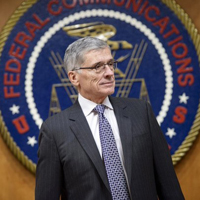 After more than a decade of debate and a record-setting proceeding that attracted nearly 4 million public comments, the time to settle the Net Neutrality question has arrived. This week, I will circulate to the members of the Federal Communications Commission (FCC) proposed new rules to preserve the Internet as an open platform for innovation and free expression. This proposal is rooted in long-standing regulatory principles, marketplace experience, and public input received over the last several months.
After more than a decade of debate and a record-setting proceeding that attracted nearly 4 million public comments, the time to settle the Net Neutrality question has arrived. This week, I will circulate to the members of the Federal Communications Commission (FCC) proposed new rules to preserve the Internet as an open platform for innovation and free expression. This proposal is rooted in long-standing regulatory principles, marketplace experience, and public input received over the last several months.
Broadband network operators have an understandable motivation to manage their network to maximize their business interests. But their actions may not always be optimal for network users. The Congress gave the FCC broad authority to update its rules to reflect changes in technology and marketplace behavior in a way that protects consumers. Over the years, the Commission has used this authority to the public’s great benefit.
The Internet wouldn’t have emerged as it did, for instance, if the FCC hadn’t mandated open access for network equipment in the late 1960s. Before then, AT&T prohibited anyone from attaching non-AT&T equipment to the network. The modems that enabled the Internet were usable only because the FCC required the network to be open.
Companies such as AOL were able to grow in the early days of home computing because these modems gave them access to the open telephone network. Read more…
FTC & Congress Focus on IoT
Excerpted from USTelecom Media Report
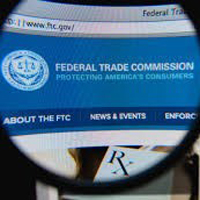 The Internet of Things (IoT) is revolutionizing the online world. Devices ranging from home security and energy-saving sensors to health monitors and appliances are connecting to the Internet at super-fast speeds and are expected to number 50 billion by 2020, according to Cisco’s previous projections. In the face of this accelerating technological evolution, both Congress and the Federal Trade Commission (FTC) are focusing on the implications of IoT for consumers, including privacy and data security.
The Internet of Things (IoT) is revolutionizing the online world. Devices ranging from home security and energy-saving sensors to health monitors and appliances are connecting to the Internet at super-fast speeds and are expected to number 50 billion by 2020, according to Cisco’s previous projections. In the face of this accelerating technological evolution, both Congress and the Federal Trade Commission (FTC) are focusing on the implications of IoT for consumers, including privacy and data security.
This week, the FTC released a new report outlining recommendations intended to help protect consumers as they increasingly buy and use IoT devices. The report, which incorporates the input of technologists, academics, industry stakeholders, and consumer advocates who participated in the FTC’s November 2013 IoT workshop, offers the following guidance and recommendations:
Developing IoT Devices with Data Protection in Mind. Develop IoT technologies that incorporate security into devices at the outset; employ a multi-faceted security strategy to mitigate security risks; and put measures in place to keep unauthorized users from accessing a consumer’s device, data, or personal information.
Limiting Collection of Consumer Data. Reduce the risks associated with maintaining a large collection of consumer data (i.e., attracting hackers and data thieves), and minimize the chances of data being used in ways consumers may oppose. Read more…
Senate Commerce Committee Hearing on IoT
Excerpted from Broadcasting & Cable Report by John Eggerton
 The Senate Commerce Committee has scheduled a hearing on the Internet of Things (IoT), a hot topic in Washington, DC, particularly after it was such a hot topic at the Consumer Electronics Show in Las Vegas earlier this month.
The Senate Commerce Committee has scheduled a hearing on the Internet of Things (IoT), a hot topic in Washington, DC, particularly after it was such a hot topic at the Consumer Electronics Show in Las Vegas earlier this month.
"The Connected World: Examining the Internet of Things" is scheduled for February 11th at 10:00 AM.
The Federal Trade Commission (FTC) on Monday released a staff report with recommendations on how to insure the safety and security of personal information in that interconnected web of communicating devices.
Those included legislative solutions, which the Commerce Committee signaled in announcing the hearing that might not be the best approach.
"Following last week’s Open Internet hearing, this upcoming proceeding will focus on how devices — from home heating systems controlled by users online, to wearable devices that track health and activity with the help of Internet-based analytics — will be made smarter and more dynamic through Internet technologies," said the Republicans on the Committee website, adding, "Government agencies like the Federal Trade Commission, however, are already considering possible changes to the law that could have the unintended consequence of slowing innovation."
The hearing was requested by Senators Kelly Ayotte (R-NH), Cory Booker (D-NJ), Deb Fischer (R-NE) and Brian Schatz (D-HI).
Report from CEO Marty Lafferty
 As the Internet of Things (IoT) continues to grow in prominence, we’re pleased to present the second installment of the DCIA’s IoT Marathon webcast recorded during the 2015 International CES.
As the Internet of Things (IoT) continues to grow in prominence, we’re pleased to present the second installment of the DCIA’s IoT Marathon webcast recorded during the 2015 International CES.
If you missed last week’s premiere episode, here’s a link to the initial flight of video segments covering Smart Objects for Fitness & Healthcare.
Today, you’re cordially invited to view the next major section of our webcast entitled Programmable Homes & Energy Management. Just click here to view the entire episode; or click on the links that follow to screen individual segments:
LV Sands Global CIIO Les Ottolenghi delineates the principal terminology for this first major section of the webcast in Defining Programmable Homes & Energy Management.
IBM Global Consumer Electronics Director Scott Burnett, IoT Industrial Sector Lead North America Tim Connell, and IoT Foundation Product Manager Neil Postlethwaite provide an overview of How IBM Enables Programmable Homes & Energy Management.
Sentri Co-Founder Wendy Qi demonstrates the company’s now-launching flagship product in Sentri – Welcome to a Smarter Home.
Hubble Chief Product Officer Dariush Zand outlines the new ways Hubble Is Keeping You Connected in 2015.
Al Baker, the Co-Founder & CEO of Playtabase, updates us on Reemo, the Playtabase Gesture Control for Your Connected Home, and industry progress.
NXP Semiconductors Director, RFID, Victor Vega and Business Development Manager Patrick Comiskey conduct several live appliance demos of NXP Secure Connections for a Smarter World.
Altman Vilandrie Director Stefan Bewley provides insightful commentary on industry advancement in this space in Altman Vilandrie – Innovative Actionable Strategies.
Asante Vice President & General Manager Albert Li describes three products that exemplify his company’s consumer commitment in Asante Simple & Smart Things for Everyone.
Sensibo’s CEO & Co-Founder Omar Enbar shares his vision for how connected home cooling can benefit everyone in Sensibo – Make Any Air Conditioner Smart.
Greenwave Systems Chief Scientist & Technology Evangelist Jim Hunter provides a strategic perspective on several key issues in Greenwave Systems – Helping You Make All the Right Connections.
GreenIQ Founder & CEO Udi Dahan discusses and then displays the company’s promising IoT solution for smart gardening in GreenIQ – Your Home Just Got Smarter.
E-Radio Executive Vice President Duff Roman presents an innovative approach to connecting utilities and home appliances to conserve energy with e-Radio Prices to Devices (P2D).
Arrayent President & CEO Shane Dyer takes us behind the scenes to experience the excitement now driving the IoT movement in Arrayent – The Platform for Connected Products.
SwitchBee EVP of Strategy, Aharon Grossman, shows how the company’s revolutionary switches can lead the migration to smarter homes in SwitchBee for Programmable Homes.
ARM Director of Marketing, Jeff Chu; Senior Software Engineer, Eric Gowland; and Software Engineer, Any Moore, provide an ARM CES Exhibit Booth tour featuring the company’s IoT Embed Platform and programmable home deployments in ARM – Expanding the Connected Experience.
Iris Home Management’s Jan Nesbit of Lowe’s showcases exemplary apps currently supported by the Iris Home Management System.
Media Tuners President David Frerichs points out problems and offers solutions for programmable homes in Media Tuners – Being Smarter About Smart Homes.
Xenon Managing Director, Michael Yeh, gives a glimpse of home monitoring, connected cameras, and other offerings of Xenon Monitoring & Smart Home Systems.
And finally, ZUtA Labs Business Development Leader, Daniel Rubin, and Founder, Tuvia Elbaum, present the inaugural ZUtA PocketPrinter in ZUtA Labs – The First Mini-Robotic Printer.
Next week, we’ll bring you a brand new flight of video segments in the next major section of our webcast entitled "Media Entertainment & Social Networking."
For each of the three weeks thereafter, we’ll launch a new episode of thematically linked video-segments to complete our industry update on this vital and important technology movement. Share wisely, and take care.
What Is the IoT and Why Should You Care?
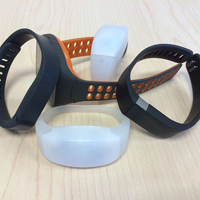 If you have a wearable fitness tracker, smart TV, wireless home-security system, or a web-enabled thermostat, you have already bought into the idea of the "Internet of Things (IoT)."
If you have a wearable fitness tracker, smart TV, wireless home-security system, or a web-enabled thermostat, you have already bought into the idea of the "Internet of Things (IoT)."
Even the Hive Kickstarter project we discussed in our "Fund the Future" feature is an example of it. But what exactly is the IoT, and why should you care?
The term "Internet of Things," or IoT for short, describes the connection of everyday objects and devices to the Internet with the intention of making it possible for them to capture, send, and receive data without additional human interaction.
The reason for that is simple: the IoT is an incredibly broad concept, with a vast amount of potential across many different industries and groups. Implementation can vary greatly.
In some ways, trying to describe the Internet of Things is like trying to describe the World’s Fairs of the last century. The concepts are bold, the individual projects can be wild, and to the average person the promise of the IoT can seem like an unrealistic dream of the future. But it isn’t. The IoT is already here.
Look at your wrist. If you are wearing a fitness tracker such as a Fitbit, Jawbone, or Microsoft Band, you are wearing what is called a "smart" device. But what makes a device a smart device? Read more…
IoT Could Be Key to IT’s Response to Climate Change
Excerpted from Network World Report by Julie Sartain
 Scientists announced last month that 2014 was the planet’s warmest year on record, sparking renewed debate in Washington, DC about the causes of global warming and what to do about it. But global warming isn’t just a political issue, it’s an information technology (IT) issue as well.
Scientists announced last month that 2014 was the planet’s warmest year on record, sparking renewed debate in Washington, DC about the causes of global warming and what to do about it. But global warming isn’t just a political issue, it’s an information technology (IT) issue as well.
No matter what your personal beliefs are, IT execs would be remiss if they didn’t think about global warming in the context of disaster recovery, just as you would if your company were located in a region prone to hurricanes or earthquakes. And beyond that, global warming could present an opportunity for you to lead your company into new growth areas.
"I’m not here to say whether global climate change is happening or not," says Whit Andrews, Vice President and Distinguished Analyst at Gartner.
"Natural disasters occur regardless of global climate change. Whether anthropogenic or not, business opportunities are there regardless of the cause. Instead, companies should recognize that this creates opportunities to create products and services that were not there previously."
He adds, "Companies need to discuss it, research it, and establish scenarios in which global climate change occurs, then develop new technologies and Internet of Things (IoT) tracking and monitoring solutions to prevent and/or mitigate these adversities." Read more…
Businesses Are Bracing for the IoT
Excerpted from Datamation Report by Pedro Hernandez
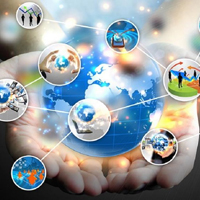 Business leaders are awaiting the bottom line-boosting effects of the Internet of Things (IoT).
Business leaders are awaiting the bottom line-boosting effects of the Internet of Things (IoT).
In a survey of over 450 business and IT leaders, Gartner discovered that 40 percent were looking for the IoT to boost sales and cut costs for their organizations within three years, the analyst group announced today. Further out (five years or more), 60 percent said that they expected the same result.
Yet few of them have a plan to capitalize on the IoT’s growth.
Less than a quarter of those polled had IoT leadership in place, in the form of either a single business units or multiple groups taking up the cause.
Gartner’s data reveals that "the IoT is very immature, and many organizations have only just started experimenting with it" by adding IoT-enabled gear to their production environments, said Nick Jones, a Vice President and Distinguished Analyst at the research firm.
Some industries are further ahead of the curve than others. Executives at communications and services companies had a better grasp of the IoT’s potential impact, while those in the government, education, banking and insurance industries lagged behind.
Economics aren’t a factor, as it only adds "a few tens of dollars" to add networking and sensing capabilities to products, observed Jones. Read more…
Verizon Helps Manage IoT Security
Excerpted from Light Reading Report by Jason Meyers
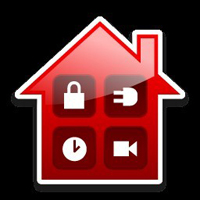 Verizon is trying to make it easier for enterprises deploying thousands or millions of connected devices to keep track of them and ensure that they’re following security and encryption protocols.
Verizon is trying to make it easier for enterprises deploying thousands or millions of connected devices to keep track of them and ensure that they’re following security and encryption protocols.
To that end, Verizon Enterprise Solutions recently launched an enterprise portal for its Managed Certificate Services platform that offers digital certificate creation and management capabilities for large-scale Internet of Things (IoT) deployments ranging up into the tens of millions — from vehicles to smart home gadgets to wearables to industrial devices and beyond.
The platform is designed to quickly authenticate objects and machines, verifying identity and facilitating secure data transmitted between the connections, says Johan Sys, Managing Principal for Identity and Access Management at Verizon Enterprise Solutions.
Verizon recently said that it had IoT and telematics revenue of $585 million in 2014.
Managing security for enterprises venturing into the IoT represents another important role service providers can play as they seek to find and define their place in the IoT sector, and continue to diversify their importance beyond the role of connectivity provider — whether that’s in facilitating creation of enterprise IoT applications or helping enterprises address critical issues like security. Read more…
Under Armour Scoops-Up Health Apps
Excerpted from CNET News Report by Sarah Mitroff
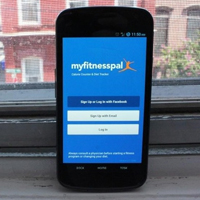 Move over, Nike, Under Armour is building its own fitness technology empire. The company announced today that it has purchased MyFitnessPal and Endomondo in an effort to both sell you clothes to work-out in and track those work-outs, too.
Move over, Nike, Under Armour is building its own fitness technology empire. The company announced today that it has purchased MyFitnessPal and Endomondo in an effort to both sell you clothes to work-out in and track those work-outs, too.
According to the company’s fourth-quarter earnings report, Under Armour paid $475 million for MyFitnessPal, a food-tracking app with a massive community of people that helps manage a database of nutritional information on almost every food item you can find. MyFitnessPal has apps for Android, iOS and Windows Phone that record every calorie you eat and help you stick to dietary goals, such as losing weight or eating more protein. The company has more than 80 million users.
Endomondo, an exercise activity-tracking app for iOS, Android, Windows Phone and BlackBerry, was acquired for $85 million. A competitor to RunKeeper and Strava, the app can record your runs, walks, bicycle rides and other activities. The company had 20 million registered users.
Those combined 100 million users from both apps will help grow Under Armour’s existing Connected Fitness community, which already includes a fitness-tracking app called Under Armour Record. That app keeps tabs on your overall health by recording your workouts, daily step counts, sleep and more. Read more…
What the IoT Can Do for Business
Excerpted from The Business Journals Report by Terry Brock
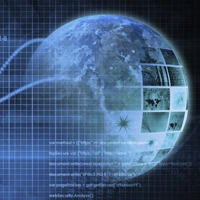 A hot term in technology and business today is the Internet of Things (IoT). This is an awkward way of describing a process that is changing the world of business and how human beings use technology.
A hot term in technology and business today is the Internet of Things (IoT). This is an awkward way of describing a process that is changing the world of business and how human beings use technology.
What it means is that a network of sensors is connected to the Internet through either Wi-Fi or Ethernet and usually connected to the cloud. The connection of these sensors helps to alert various components as to what is happening so a specific action can be taken.
There are many applications. In health care, for instance, sensors can monitor heart rates for people who are susceptible to problems. If a heart rate or other vital signs fluctuate outside of accepted parameters, signals can be sent to medical professionals who can monitor remotely. They could either call the patient, or, if needed, alert EMTs or ambulance services.
This can save costs and dramatically increase patient care. Wearable technologies like bracelets, shoe sensors and more help to monitor exercise, heart rate, perspiration and other biological signals to help healthy people optimize their lives.
In business, there are a variety of uses. In a recent interview I had with Steve Brumer of Atlanta-based 151Advisors, he discussed how retail operations are using IoT to monitor and control inventory levels, measure peak times of traffic, connect with RFID (radio frequency identifiers), monitor remote alarms, and more. Read more…
What Top CEOs Think about IoT
Excerpted from Computer Business Review Report by Amy-Jo Crowley
 The possibilities for the Internet of Things (IoT) in every sector are limitless with more efficient factories for manufacturers and improved customer loyalty for retailers. But have you thought about what opportunities are on the minds of leading CEOs?
The possibilities for the Internet of Things (IoT) in every sector are limitless with more efficient factories for manufacturers and improved customer loyalty for retailers. But have you thought about what opportunities are on the minds of leading CEOs?
Accenture and the Economist Intelligence Unit recently surveyed 1,400 C-suite decision makers, half of whom are CEOs, to identify and rank the key opportunities and challenges they face today.
The survey found that 57% of respondents expect the IoT to drive long-term revenue growth, as 61% cited digital initiatives as a tool for growth.
However, when asked about investment and strategy plans to deliver on these expectations, most companies are sitting on the fence. Just 7% have developed a comprehensive strategy and committed investments accordingly, while 73% have yet to make any concrete investments. Another 20% have begun investing in some selected areas of their business.
Tim Armstrong, CEO of AOL, the US-based media technology company, says companies will need to build capacity to capitalize on the opportunities. "The strategic direction of where technology is going is clear," he said. "What’s going to be the next forcing function is whether companies have the capability to take advantage of that."
CEOs expect IoT to be a huge creator of jobs in the future. Read more…
Obama’s Big Data Privacy Plans Get Lift
Excerpted from Reuters Report by Roberta Rampton
 The White House is working with a Republican Congressman on the US House of Representatives’ leadership team and Democrats in both the House and Senate on a bill to protect data collected from students through educational apps.
The White House is working with a Republican Congressman on the US House of Representatives’ leadership team and Democrats in both the House and Senate on a bill to protect data collected from students through educational apps.
The legislation, aimed at ensuring kids’ data is used only for educational and legitimate research purposes, is the first of President Barack Obama’s "Big Data" privacy plans to gain traction in the Republican-controlled Congress.
Obama has pushed to do more to protect privacy in an age when consumers leave a trail of digital footprints through smartphones, other personal devices and social media, information that can be collected, analyzed and sold.
It is one element of his broad strategy to beef up the nation’s cyber laws, an issue that has gained momentum after high-profile cyber thefts of data from companies such as Target and Home Depot.
Late on Wednesday, No. 2 US health insurer Anthem said hackers stole personal information on up to 80 million people. The FBI is investigating.
Obama’s cybersecurity advisor, Michael Daniel, said the latest intrusion was "disturbing" because of its size. He said the hack is an example of the threat that is prompting the White House push forward on working on cyber legislation with Congress. Read more…
Project Maelstrom Protects Internet with Reverse DDoS
Excerpted from Hacked Report by Giulo Prisco
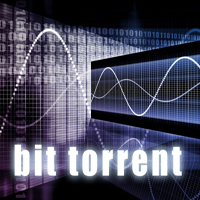 ExtremeTech reports that Project Maelstrom is getting very close to reality, and a consumer version is expected this year.
ExtremeTech reports that Project Maelstrom is getting very close to reality, and a consumer version is expected this year.
BitTorrent is looking to change the way websites are hosted by keeping the data not on a centralized server, but on the home-computers of users. These sites would be split up into pieces just like a file shared via a torrent.
Project Maelstrom will make the Internet not only more open and free, but more efficient as well. When lots of users access a web server, it slows down.
That is the basis of Distributed Denial of Service (DDoS) attacks, where hostile agents artificially create so many page hits that the central server slows to a halt.
On the contrary, BitTorrent users know that when many people are downloading and seeding a file, the system becomes faster and more reliable, not less.
According to MIT Technology Review, the Maelstrom browser can access conventional websites. But it can also be used to publish and browse websites that don’t reside on any particular server, known as torrent web pages. To access a site published in that way, the browser grabs the data from the browsers of people who are already viewing it or have visited the site recently. Read more…
P2P Cloud Storage Promises Security & Reliability
Excerpted from InformationWeek Report by Pablo Valerio
 Several new peer-to-peer (P2P) cloud storage services are beginning to appear on the market, claiming strong security and reliable storage. Because data is stored in different locations, broken into blocks, further shred into fragments, it is nearly impossible for anyone besides the data owner to gain access to it. Let’s take a closer look at these services and what they can offer businesses.
Several new peer-to-peer (P2P) cloud storage services are beginning to appear on the market, claiming strong security and reliable storage. Because data is stored in different locations, broken into blocks, further shred into fragments, it is nearly impossible for anyone besides the data owner to gain access to it. Let’s take a closer look at these services and what they can offer businesses.
I’ve come to think of P2P cloud storage as something similar to the BitTorrent file distribution system. Torrent users speed up the file transmission by storing the same file, or portions of it, in multiple locations. When new users start to download any file, they also start sharing it the moment some blocks are downloaded. Since there is no "official" directory of BitTorrent file locations, it’s almost impossible to stop distribution.
A P2P cloud storage service has several security and other benefits over a private cloud:
Data is stored and replicated in multiple locations and different countries, but divided into smaller "pieces." This ensures data integrity while making it difficult for hackers to obtain a copy of the entire file.
The ability to download data from several sources simultaneously increases network speed.
International users get better performance by accessing data from locations in different regions. Read more…
The Global Rise of Cloud Computing
Excerpted from CloudTweaks Report by Roger Strukhoff
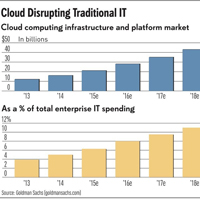 Despite the rapid growth of cloud computing, the cloud still commands a small portion of overall enterprise IT spending. Estimates I’ve seen put the percentage between 5% and 10% of the slightly more than $2 trillion (not including telco) spent worldwide in 2014 on enterprise IT.
Despite the rapid growth of cloud computing, the cloud still commands a small portion of overall enterprise IT spending. Estimates I’ve seen put the percentage between 5% and 10% of the slightly more than $2 trillion (not including telco) spent worldwide in 2014 on enterprise IT.
Yet growth projections for cloud remain healthy, and there is optimism in the air. A recent roundup of projections in Forbes paints the picture.
From our studies at the Tau Institute for Global ICT studies, we believe it’s a good time to be optimistic not just in North America, but throughout the world as a whole. There are bright spots in every region, with countries such as Jordan, Latvia, Morocco, and the Philippines joining better-known places where IT is playing an increasing role in economic development.
Research we’ve been conducting for the past several years has produced a picture of how more than 100 nations throughout the world are progressing with their overall IT infrastructure, on a relative basis. We seek to find the nations that are doing the most with the economic resources they have, and we issue several specific groups of rankings. Given robust underlying infrastructure, and reasonable socio-economic conditions, a nation should be set to benefit from the continuing growth of cloud computing. Read more…
Plan Now for Datacloud South East Asia
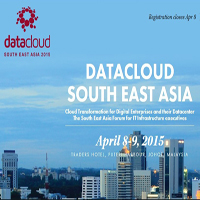 Datacloud South East Asia, co-sponsored by the DCIA, is coming to the Trader Hotel in Johor, Malaysia from April 8th through 9th.
Datacloud South East Asia, co-sponsored by the DCIA, is coming to the Trader Hotel in Johor, Malaysia from April 8th through 9th.
Here are links for the Conference Program, Speakers, and Venue for this exciting event.
Enterprises in partnership with third-party operators across South East Asian markets are migrating to cloud data centers, which are fast becoming the indispensable infrastructure for computing, storage and management of Big Data.
Enterprises require simple and scalable ways to create interoperability among many siloed data sources and endpoints, and cloud solutions now offer highly available, multi-tenant, and elastic integration to support high-density computing.
Many challenges confront companies that are adapting to a cloud environment: adjusting data center environments to cope with the new demands cloud brings while also driving greater energy efficiency; security of cloud services and managing increased workforce use of smartphones and tablets; and moving applications to the cloud to meet security requirements for service availability, manageability, and connectivity.
Data security methods must solve multiple challenges including how IT departments manage the transformation to cloud brokerages and look to outsourcing as part of the solution. Workload migration among clouds is another key challenge for hybrid clouds – some enterprises are moving part of their workload to a public cloud environment while retaining other workloads in a private cloud.
Coming Events of Interest
Datacloud South East Asia — April 8th-9th in Johor, Malaysia. Datacloud South East Asia will assess the energy, scalability, security, architecture, and software challenges confronting operators of data centers and enterprises engaged in or considering transitions to the cloud.
NAB Show — April 11th-16th in Las Vegas, NV. Popular and fresh attractions for 2015 include the Cloud Pavilion (CP) for asset management; Connected Media Live (CML), focusing on the consumer experience; the Drone Pavilion (DP), featuring a fully enclosed "flying cage" for demonstrations; and the New Media Expo (NMX).
Internet of Things Conference — April 15th-17th in San Diego, CA. The IoT Con will focus on how companies are using a variety of technologies, including ZigBee radios, Wi-Fi, and machine-to-machine (M2M)software, to connect things to the Internet, and how they are achieving real business benefits from doing so.
All That Matters — May 20th-23rd in Singapore. Packed with influencers, content creators, platforms and marketers, ATM drives business and global collaboration for decision makers in the entertainment, media, and marketing industries.
CES Asia — May 25th-27th in Shanghai, China. The success of the 2015 International CES builds strong momentum for CES Asia. With strong exhibitor demand for CEA’s inaugural event, the show will be curated with select qualifying companies permitted to exhibit.
Data Center and Cloud Awards — June 2nd in Monaco. Europe’s most prestigious awards for data center and cloud achievements will be announced at an evening ceremony prior to the opening of Europe’s ‘must-attend’ Datacloud Europe conference and exhibition.
Freescale Technology Forum — June 22nd-25th in Austin, TX. FTF, this year focusing on the Internet of Things (IoT), is the heart of discovery, imagination and innovation. Together we will strategize and design the next market-shifting products.
Internet of Things World Forum (IoTWF) — October (2015 Dates TBD) in Dubai, UAE. IoTWF is an exclusive event that brings together the best and brightest thinkers, practitioners, and innovators from business, government, and academia to accelerate the market adoption of the Internet of Things.
